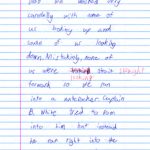first person
Video Games Go to Washington: The Story Behind The Howard Dean for Iowa Game

Ian Bogost and Gonzalo Frasca explain a new genre: persuasive games, and delve into the development and emerging legacy of The Howard Dean for Iowa Game, "the first official video game ever commissioned in the history of U.S. presidential elections." This new genre provides an opportunity to rethink the cultural status of games. If games are normally judged by how entertaining they are, persuasive games must be released from this criterion and assessed on how well they convey their message.
The Puppet Master Problem: Design for Real-World, Mission-Based Gaming

Jane McGonigal argues that pervasive games - which involve electronic and 'real world' missions - reverse the traditional conception of the power dynamics of gaming, which has understood gamers as free agents. In contrast, according to McGonigal, designers of pervasive games exercise power over players, though their control is ultimately compromised by players' interpretive agency.
On A Measure for Marriage

Nick Fortugno describes a live-action role-playing game with a real-world consequence - a marriage proposal.
On Itinerant

Teri Rueb describes Itinerant and quotes excerpts from the project's vocal track. The installation-style piece uses a GPS system and a headset. As the participant walks through the allotted space, the GPS cues various recordings. Rueb claims to want "to implicate the participant as a charged body in public space whose movement and presence become critical agents in structuring the meaning of the work."
On John Tynes’s Puppetland

Sean Thorne explains how he uses Puppetland to help children improve their writing. The RPG allows the students to develop characters, and to participate in the construction of stories so that they're imaginatively invested in what they write.